Carol Kauffman: Co-Author of Real-Time Leadership
Episode 355
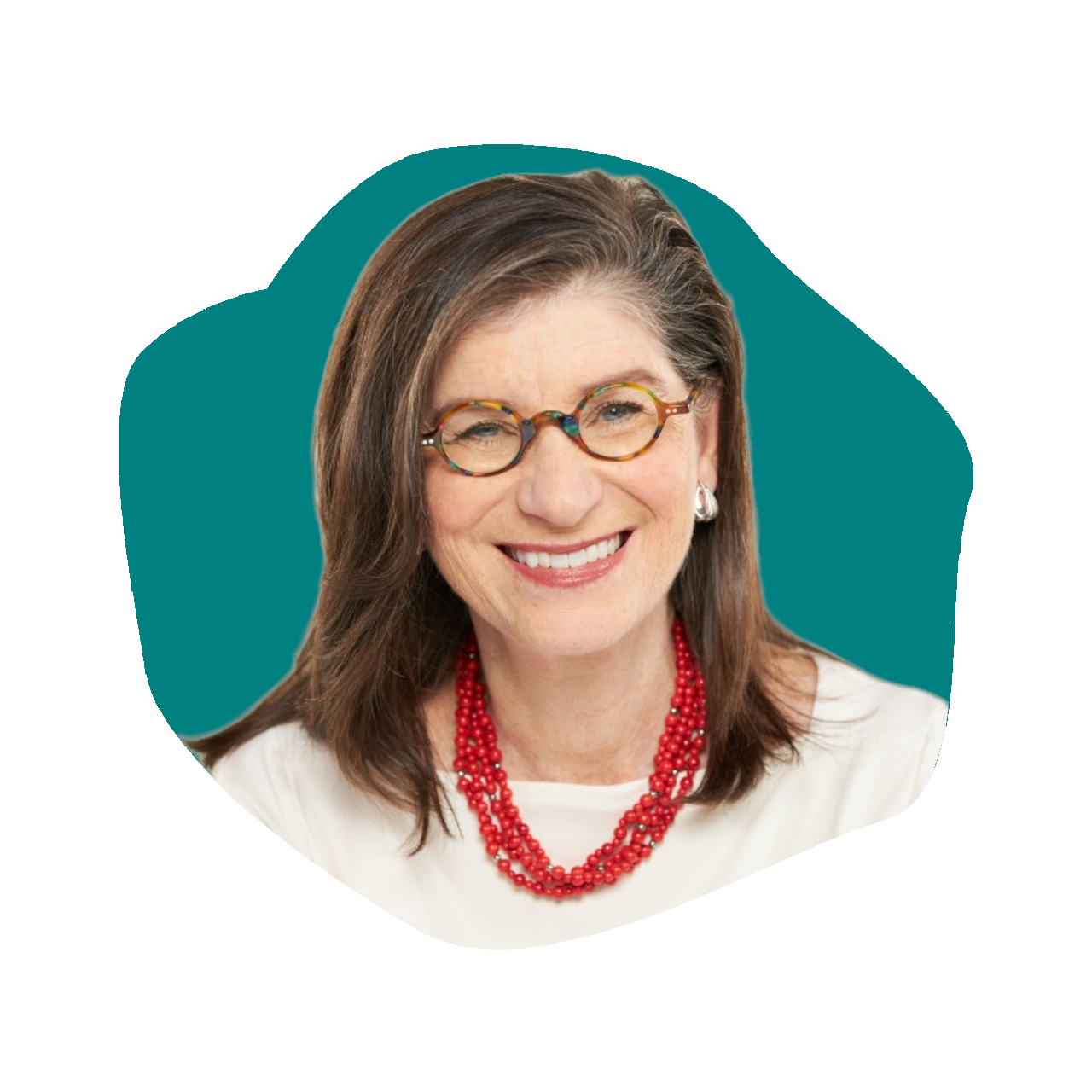
On today’s episode, we hear from Carol Kauffman, the founder and Executive Director of the Institute of Coaching at Harvard Medical School and Author of the new book, Real-Time Leadership: Find Your Winning Moves When The Stakes Are High. Carol is one of the world’s top coaches and has seen it all! We discuss leadership in today’s world, some of those tools that can help leaders become better and of course hear more about her brand new book, Real Time Leadership. This episode is filled with so many takeaways that you won’t want to miss! On this episode of #TheKaraGoldinShow.
Resources from
this episode:
Enjoying this episode of #TheKaraGoldinShow? Let Kara know by clicking on the links below and sending her a quick shout-out on social!
Follow Kara on LinkedIn – Instagram – X – Facebook – TikTok – YouTube – Threads
Have a question for Kara about one of our episodes? Reach out to Kara directly at [email protected]
To learn more about Carol Kauffman and Real-Time Leadership:
https://www.linkedin.com/in/carolkauffmanphd/
https://carolkauffman.com/
Transcript
Kara Goldin 0:00
I am unwilling to give up that I will start over from scratch as many times as it takes to get where I want to be I want to be, you just want to make sure you will get knocked down. But just make sure you don’t get knocked down knocked out. So your only choice should be go focus on what you can control control control. Hi, everyone and welcome to the Kara Goldin show. Join me each week for inspiring conversations with some of the world’s greatest leaders. We’ll talk with founders, entrepreneurs, CEOs, and really some of the most interesting people of our time. Can’t wait to get started. Let’s go. Let’s go. Hi, everyone, it’s Kara Goldin from the Kara Goldin show. And I’m so excited to have my next guest. Here we have Carol Kaufman, who, amongst other things, is the co author of real time leadership, it’s real time leadership, find your winning moves when the stakes are high. And certainly the stakes are very, very high for leaders today. So super excited to have Carol here to talk to us a lot more about this and and also her book, which is absolutely excellent, in addition to being an amazing, amazing coach that is a world renowned top coach, as many people know, I don’t typically have coaches on this podcast. But Carol being who she is, I thought it would make a ton of sense to have her on and discuss exactly what she’s seeing me as she’s working with many, many high profile top level leaders that are out there. And Carolyn addition is the founder and executive director of the Institute of coaching at the Harvard Medical School. And as I mentioned, this new book comes out this week. So we’re very, very excited to have her here to discuss it. So without further ado, I just want to introduce Carol and stop talking so that you can hear from her. Okay, here we go. So hi, Carol Kaufman, how are you? Hello, I am happy. Very, very happy to connect with you and be here. Wonderful. Well, I loved your book. It was so amazing. And I’d love to start off the discussion actually going a little bit further back to hear a little bit more about you. And can you share a bit more about your background and how you got to be one of the top coaches in the world and an executive director at the coaching at the Institute of coaching at the Harvard Medical School.
Carol Kauffman 2:43
Okay, well, do you have five hours?
So number one, I actually grew up in kennel. And so I’ve got a very strong relationships with animals, probably not where you expected me to start. We had an illegal kennel imagine 30 dogs. And then my first job was working with violent horses. Okay, how’s this relating to coaching, you’re wondering, and I love teaming things, is what it comes down to. And so for a lot of the people that I’ve coached in my life, there are people that scare other people. And as one of them said to me once, and the man had a psychological insight of a gnat. And so the fact that he unlocked a major understanding for me in my own life was was very compelling. We said, Oh, you went from Alpha horses to Alpha men.
Yes, going from being a therapist to a coach to in a nutshell, as a trauma therapist, I would be following the trail of tears to get to healing. As a coach who also knows a lot about trauma, you follow the trail of dreams. So when we do for example, crucible stories with leaders, which is really what are the experiences you’ve had in your life, that are so challenging, they have transformed you into something else. Now, in coaching, what you really explore there is how has that experience informed your leadership and made you a stronger person? And that would be what I would do when I was working with trauma survivors, except a different pathway there.
So interesting. Are there anything? Any, like key pieces that you saw? That? I mean, obviously, not everyone who’s been through a trauma is going to become a leader, or is going to become a CEO of accompany. Was there anything that you spotted there that you really, maybe you weren’t surprised about? That they had had some sort of major trauma and sort of how they had dealt with that? Yes, there is an absolute key, and that is taking responsibility. So if you really kind of like I, this happened to me, and I am responsible for strengthening myself finding meaning in what happened to me, you know, there’s Victor Frankel’s book Man’s Search for Meaning. So I think the people who really could own what could they do to survive it, and how it really informs their leadership, and it can take them to a place of humility. And at the same time, knowing as I, as I said, to one of my, my people, once a woman who had been overthrown horribly from the law firm that she was the head of. And so we explored and I said, so you know, what’s the life lesson leadership lesson you got from this? And she said, Oh, I’ve learned that blah, blah, blah. And I’m like, no, no, that’s not good enough. What has how has this changed your life? And then she said something else like, oh, you know, I realized that with no energy. And finally I went to her and I said, Listen, on a scale of one to 10, this was a nine, I want a nine leadership lesson from this. And she says, I have a backbone of steel. I’m like, Yes, that’s, that’s trauma work with with leaders, really getting an appreciating your backbone of steel and then wanting to be a force for good. So interesting. So what makes a great leader? Okay, the first thing? Well, I think already, you hear that it’s the person who can take responsibility for themselves and feels a sense of responsibility and care for others. Now, of course, they also have to be skilled leaders, as well. So back to Viktor Frankl, he wrote a more or less a quote that between every stimulus and response, there’s a space. And in that space is our freedom. And what I think of for great leaders is how can they make space under pressure, but also space every day, and actually live in that space? So they have choice, so that when they are leading, they’re responsive to what’s actually going on around them, inside them, and with other people and making choices rather than depending on their reflexes. So interesting, almost like multitasking, but a sort of a different definition for multitasking, maybe in some ways, right? That’s really true. That’s really true. Because you want to be a three dimensional leader. So you in a way, what’s outside, what’s inside? What’s between? Yeah.
Kara Goldin 8:12
Can everybody become a leader?
Carol Kauffman 8:15
Yes, I actually think that unless you are interpersonally, irresponsible, I think if you are interpersonally, irresponsible, you probably don’t have the makings for a leader or that’s what you need to do first. And I think many of us are much more powerful leaders than we realize. Because
And in a way, that’s true, very powerful people there. They’re not the only people I coach, but I think starting out working first with animals who were traumatized, then people who were traumatized, then people who were traumatized becoming peak performers, and then from that into coaching,
Kara Goldin 3:51
and so you touched on this, but you worked with trauma patients prior to getting into coaching and teaching humans and beyond horses. Can you share the similarities that you saw between the work that you were doing then and the work that you’re doing now?
Carol Kauffman 8:36
if you have any impact on somebody’s well being resources, projects, etc, then to that person in many ways, you’re a leader, whether you know it or not, because you have an impact on their lives.
Kara Goldin 8:53
It’s so interesting, ya know, it’s, it’s, I think about this a lot. So you wrote a fabulous book called Real Time leadership have it right here. For those who are looking at the visual on this. Can you explain the meaning behind the title of your new book?
Carol Kauffman 9:13
Yes, well, real time is, is the same thing. How do you how do you lead in real time by creating that space? And then being able to make the most of every moment? Because we have 1000s of little tiny windows of opportunity that just flashed by us every day? And how can we make the most of them and not go into our default? I mean, so many of us have great pattern recognition. You know, when you see a and b, you go, Oh, it’s C, but the world is no longer linear. So how do we stay? One of the things we talked about is being mindfully alert. So mindful, we know that beginner’s mind noticing, etc, but alert like an athlete. And so I think if we can really get into the practice and do the reps become mindfully alert, we can be great leaders.
Kara Goldin 10:07
That is a great segue into my next question, you wrote about being mindfully alert in the book. But you also call this the move model. And I would love for you to share a little bit more about it and maybe get into why this tool is so powerful to understand.
Carol Kauffman 10:26
Great, so I’ll just say what the acronym is, then I’ll do a little bit of a double click, and then you can take us where you want to go. Okay? Okay, so the move model is basically first of all, why an acronym, the acronym just clumps together bunches of ideas, so that you can remember them in in real time. Because when you’re under stress, you need a memory trigger. So M is to be mindfully alert. Oh, is to be an options generator. V is to validate your vantage point. And E is to engage in effect change. Now, if you want, I can do a quick double click on those and then go where you’d like. Yeah, that’d be great. Okay, so am. So remember, this is all about making space. Okay, so first, you make space by being able to just name what it is you want to do. And the research shows that that actually creates a space just by naming something. So mindfully learned to watch. So that’s the three dimensions of leadership. One is, it’s really the question, what do you what do you want? And what do you need to do? Which can seem self evident, but quick example? I’ll just take an example. Because this works at top of the house and in your house, like my son, like, Mom, I’m gonna watch TV. Okay, what’s the external demand? What do you want to accomplish? Is that the reflex that’s get the homework done? Is it develop discipline? Is it to develop a love of learning? So if you just stop and say, What’s my actual goal here? So how can you be mindfully alert to what’s being asked of you? Then what are the internal resources have I invested enough time in my internal world to be able to manage myself, and then third is the interpersonal. So that’s me in a nutshell, oh, is options generator, and that is in any, and we can talk more about this if you want. But in any interaction in any challenge, I want my leaders to be able to have four options available to them. And that those are like to lean in and really engage actively to lean back and look at the data and be calmer to lean with a and b nurturance, or two, and this the tough one, not lean at all, so that I can be still and then have receptive wisdom come to me. And then v is more self evident vantage point, what is it that you’re really seeing? Are you over optimistic or under optimistic? With what you’re planning to do? Can you see clearly, can you know what you don’t know that you don’t know? Et cetera, what distorts This is where unconscious bias comes in. And then E is to engage in effect change when you want to do that, can you send out the right signals to people? So they know, for example, this is a brainstorming meeting, please don’t run out and do everything I said, you know, how do I send the right signals, get the echoes back. So in a nutshell, mindfully alert options generator, validate your vantage point, and then engage in effect change. So which one would be fun for you to talk about?
Kara Goldin 13:37
I think the concept of just having that tool when you get stuck, that’s what I felt like that was the that was the key piece. But definitely, I mean, if you wanted me to take on one, that would be
Carol Kauffman 13:52
I could tell you a story of using authour. Yeah,
Kara Goldin 13:54
I thought that’d be really interesting.
Carol Kauffman 13:57
Okay, um, this is really embarrassing. I had a really, really, really tough hair raising discussion that I had to have one where I was a little bit at fault, too. So it wasn’t even like a tough conversation. I had the high ground. And so I decided I was so like, unable to cope with it. I decided to sit down and journal myself. So I decided to use my own model. And what’s very humbling is how surprised I was it worked so well. So I was doing this now one of the pieces of the model if we double click, if you double click on the internal dimension of change, what we talk about there is how can you help yourself be five C’s? calm, clear, curious, compassionate, and courageous. So how can that settle you to a place where you can then be more clear on what you need to do and how you need to do it? So for this one, I was thinking, Okay, calm, okay, how can I just make sure myself breathe? Then get really like what will take me out of calm? Okay, then clear, what can I do to stay clear? Well don’t get me confused, jot that down. And this is a biggie is Be curious, I thought because this person is really mad at me. So how can I ask another question in the middle of that? And then how can I walk over the bridge to where they are, and really appreciate their world? But then how can I have courage to keep my own story? So that helped me settle down. But then Okay, first dimension of change, well, what do I actually need to do? What do I actually need to accomplish? And what helped me is like, oh, I want I want this to resolve, I want to cool down the situation. And I want this person to be able to work in the in the partnership, then what was really helpful and a surprise. So what is it I wanted to make sure I do not accomplish? Because I was really mad. This person had cost me a lot. And then I realized, wait, I, a part of me want to just put the nose in that BP? Like, this is how you made me feel by this? And I’m like, No, that is not the first dimension of leadership that does not honor who I am inside. And so the question is, what do we want to do? But then who do I want to be? Who do I want to be in this interaction? And those things really helped. And so we did talk, and she was furious. And at one point, she said, we just have to stop this conversation, Carol, just stop it. I’m just gonna go go. And then curious came to mind. So listen, wait, she’s I know, I’m just being defensive. But I don’t care. I said, Wait, let’s take defensive, let’s put that to the side. Now just talk to me. You’re not being defensive. You’re sharing your experience with me. You know, and so I said, Okay, so now what else matters and what else matters, and I got to watch her calm down and consolidate and become a partner again, like in so interesting,
Kara Goldin 17:12
20 minutes. That’s wild. So how do you train yourself to be able to be mindful, I know that that’s always, you know, many situations. Look, if you’re in a pressure situation, for sure, being mindful. You’re just trying to put the fires out right and move on to the next scenario, but maybe really focusing on how to be mindful, I think is something that a lot of leaders are challenged by at one moment or another, and especially if it’s a stressful, tough situations, any suggestions for people there?
Carol Kauffman 17:53
Oh, yes. First of all, it’s in the reps. Okay. So you’re not going to suddenly be able to be mindful and cool. When someone’s got two guns to your head. I want to share something that that I did, which turned out to be life changing, which is one year around New Years, and yeah, we always come up with what we’re going to do. Right? So I’m gonna do this, I’m gonna do that. And I thought, no, I thought, Okay, wait, and I fell into my head. It’s like, Wait, who do I want to be? Who do I want to be this year? So what I did was, I asked myself 20 to 80 times a day, in every single situation, who do I want to be right now? And try it for a day, just one day, and you just discover so many choices you didn’t know you had? You know, so I was going on vacation with someone. And, and they continually got lost. So each time they get lost, okay, who do I want to be? Really? Do I want to be the person that’s like annoyed with them? Because you’ve gotten lost again, and I’m lugging my suitcase? Who do I want to bid? I’m in my car, somebody slow in front of me? Who do I want to be? i It’s 10 hours in my day, my report comes to me, and it’s a sub optimal job, who do I want to be? And so keep asking that question. And that alone, if you really take that seriously, it can actually change your life.
Kara Goldin 19:25
Yeah. And really getting yourself focused on that I call it as my book was called, being undaunted, and living that way and being very focused on it. I absolutely agree. So another point you make in the book is on making space. You touched on this few moments again, and the importance of that, but I’d love to, for you to share a little bit more about that.
Carol Kauffman 19:47
So, again, I think there’s so there’s so many choices that we have every day and we have our default reflexes, you know, the main reflexes we have or you know, fight flight freeze. and befriend, we’ve translated that into Lean in, lean back, lean with or don’t lean. But if you can make space for yourself, you can then just have the impact on others that you want to have. And I think that that’s key, you know, for me, I’m really happy with a coaching engagement, sure when the person is more successful, but if they become a better human, so I think if we can make these kinds of spaces for ourselves, and then with other people help create space in the other person, I think that we can become extraordinary people and become forces for good and the world really, really needs centered, powerful, caring leaders to create cultures, where people can feel psychologically safe and in thrive. So I think the key really is making space asking yourself those five C’s, you know, then the three dimensions of leadership, and then four ways of being and then am I right? And then can I communicate? Those are all ways of making space?
Kara Goldin 21:11
So you mentioned just now the three dimensions? Do you want to share a little bit about that, too?
Carol Kauffman 21:17
Yeah, well, that’s Yes, sure. The three dimensions of leadership, you know, we, we want to be 3d. So there can be people graded the external, they really get things done. But everybody’s afraid of them. And they have no inner life, you know, or you can have someone who is great with people, and maybe even a good inner life, but they can’t get things done. So we really need them to be the three dimensional person, you know, we really need all three together to really be able to, like you said earlier, I like that internally multi process. I never really thought of it like that.
Kara Goldin 21:53
So interesting. So you’re dealing with leaders every day, and in your coaching practice, and probably if taught many leaders as as well along the way, but I’m curious to hear if you’ve ever differentiated leaders who are entrepreneurs, versus non entrepreneurs.
Carol Kauffman 22:15
Yes. And an answer, yes. I think that will entrepreneurs and founders, I’m very fond of them. And I’m a little bit of a founder, myself, when I was given $2 million to start the Institute of coaching. And I got to learn how hard it is to lead. And it’s very hard to be a founder, it needs a certain kind of energy, when you can really kind of run up a hill. And I think leaders as opposed to founders, and entrepreneurs, they have a different terrain that they have to navigate.
Kara Goldin 22:55
Interesting, but there are definitely entrepreneurs that have been leaders, too.
Carol Kauffman 23:01
Oh, you’re thinking of it that way? No, yes. Oh, I completely misunderstood you, then. I think entrepreneurs have a lot more pressure on them. And, and the challenges for you as a leader, when you’re entrepreneur, I think is how do you galvanize everyone in your company, to have the passion that you do, and have them be able to share your vision and, and understand what the mission is together? I think when you’re a leader in a larger corporation, a lot of that is done for you. And I think as a as an entrepreneur and a founder, you really have to set that tone yourself.
Kara Goldin 23:40
Yeah, no, I think it’s absolutely true. Like I think of actually, I just had Patti Sellars on here with Fortune most powerful women. And you know, yeah, and she was on the podcast a few days ago. And we were talking about this because she’s seen people who have grown companies, you know, from the beginning, but she primarily, especially for the Most Powerful Women list, there are women who, you know, are running, you know, Mary Barra, or people who are running companies that are hands down, considered leaders, but they’re different. There are different types of leaders. You know, Sheryl Sandberg. She’s not necessarily, you know, she’s not the CEO of the company. But I would still say she’s a leader. She’s not an entrepreneur, either. But yet, I think she’s got kind of an entrepreneurial mindset where she’s had to, you know, work with another entrepreneur anyway. So I think it’s fascinating because there’s a lot of different types of leaders.
Carol Kauffman 24:44
And of course, parents are leaders. Yeah. You know, how do we, how do we try to have I think, I think you’re a leader when you’re trying to have a positive impact on someone else, and you’re aware of your capacity to have that impact and whether it’s on you know, your children And or the soccer team, your coaching, or the, you know, 100,000 people that work for you. That leadership, I think leadership in many ways is a state of mind and a state of being, you know, so one is like, Who do I want to be in this moment? How can I be the best leader that I can be? And that could be, you know, in the, you know, just watching TV with the family even, okay, how can I be the best leader? Here? I am, you know, just going about my day, there’s ways that, you know, like, it’s so important that we like acknowledge people and affirm people. And I, I like to do that. And I think when you do that, you’re taking a kind of leadership role with someone where you say, I see you, and I respect that about you. So you may not technically be that person’s leader, but that has a very powerful impact. But that would be sort of the spirit of leadership inside of you, rather than the position or the job.
Kara Goldin 26:02
Do women lead differently than men?
Carol Kauffman 26:05
Yeah, I think so in there’s a big overlap. But I do think that, you know, we’ve been trained differently, women from the time they’re little are trained to multitask, they’re trained to be much more tuned to what’s going on around them. And so then when that kind of person becomes a leader, I think you, I think you are naturally better at the second and third dimensions of leadership. And I think men are taught to achieve be the head, you know, run the show. And so for them, sometimes the first dimension of leadership is sort of quicker for them. But they have to really kind of learn, I mean, COVID, has really taught CEOs that they often have to be, you know, the counselor in chief. And they had like, no idea how to do that. And I think a lot of women have been able to step into that role and are more, in general, were trained, I think, to be more facile at collaboration. That’s terribly, terribly overgeneralize. But yeah,
Kara Goldin 27:12
no, I 1,000% agree with that your subtitle of your book, find your winning moves when the stakes are high made me think of this next question. So you’ve worked with a lot of amazing leaders. When you think about the leader of tomorrow, is it different based on what we’ve been through over the last few years?
Carol Kauffman 27:34
Well, I think in a way, I actually hadn’t thought this till you asked me the question, but in a way, that is entirely what the book is about. I just sort of got that, in terms of if you can stay really attuned to the moment and not depending on, you know, what you’ve done in the past, you know, the past is the past, how do you sort of stay ahead of the curve? How do you stay mindfully open? You know, what worked, you know, yesterday is not necessarily what’s going to work tomorrow. So I would say the leaders of tomorrow have to be incredibly agile, you know, fast on the feet aware and responsive, because we just don’t know where things are going.
Kara Goldin 28:17
Yeah, I 1,000% agree and talking about Patty sellers. I mean, that was the other thing that she’s really been looking at, amongst the leaders that she knows that the ones that kind of survived, and and were successful, and in being able to lead through that was, that was the word that she used, because it’s definitely definitely apparent and so key. So you have a terrific assessment, as part of your book that you talk about. And we’ll definitely put that in the show notes as well. This book is so good, everybody needs to get a copy of it. And you are such a pleasure, Carol to talk to. So we love, love, love the time that you’ve spent with us and definitely will have all of this info and that in the show notes as well. And we will continue to follow you on social to hear more of your learnings and more about what you’re seeing out there to around leadership. Thanks again for listening to the Kara Goldin show. If you would, please give us a review and feel free to share this podcast with others who would benefit and of course, feel free to subscribe so you don’t miss a single episode of our podcast. Just a reminder that I can be found on all platforms at Kara Goldin. And if you want to hear more about my journey, I hope you will have a listen or pick up a copy of my book undaunted, which I share my journey, including founding and building hint. We are here every Monday, Wednesday and Friday. And thanks everyone for listening. Have a great rest of the week and and 2023 and goodbye for now. Before we sign off, I want to talk to you about fear. People like to talk about fearless leaders. But achieving big goals isn’t about fearlessness. Successful leaders recognize their fears and decide to deal with them head on in order to move forward. This is where my new book undaunted comes in. This book is designed for anyone who wants to succeed in the face of fear, overcome doubts and live a little undaunted. Order your copy today at undaunted, the book.com and learn how to look your doubts and doubters in the eye and achieve your dreams. For a limited time. You’ll also receive a free case of hint water. Do you have a question for me or want to nominate an innovator to spotlight send me a tweet at Kara Goldin and let me know. And if you liked what you heard, please leave me a review on Apple podcasts. You can also follow along with me on Facebook, Instagram, Twitter and LinkedIn at Kara Goldin. Thanks for listening
People Also Liked
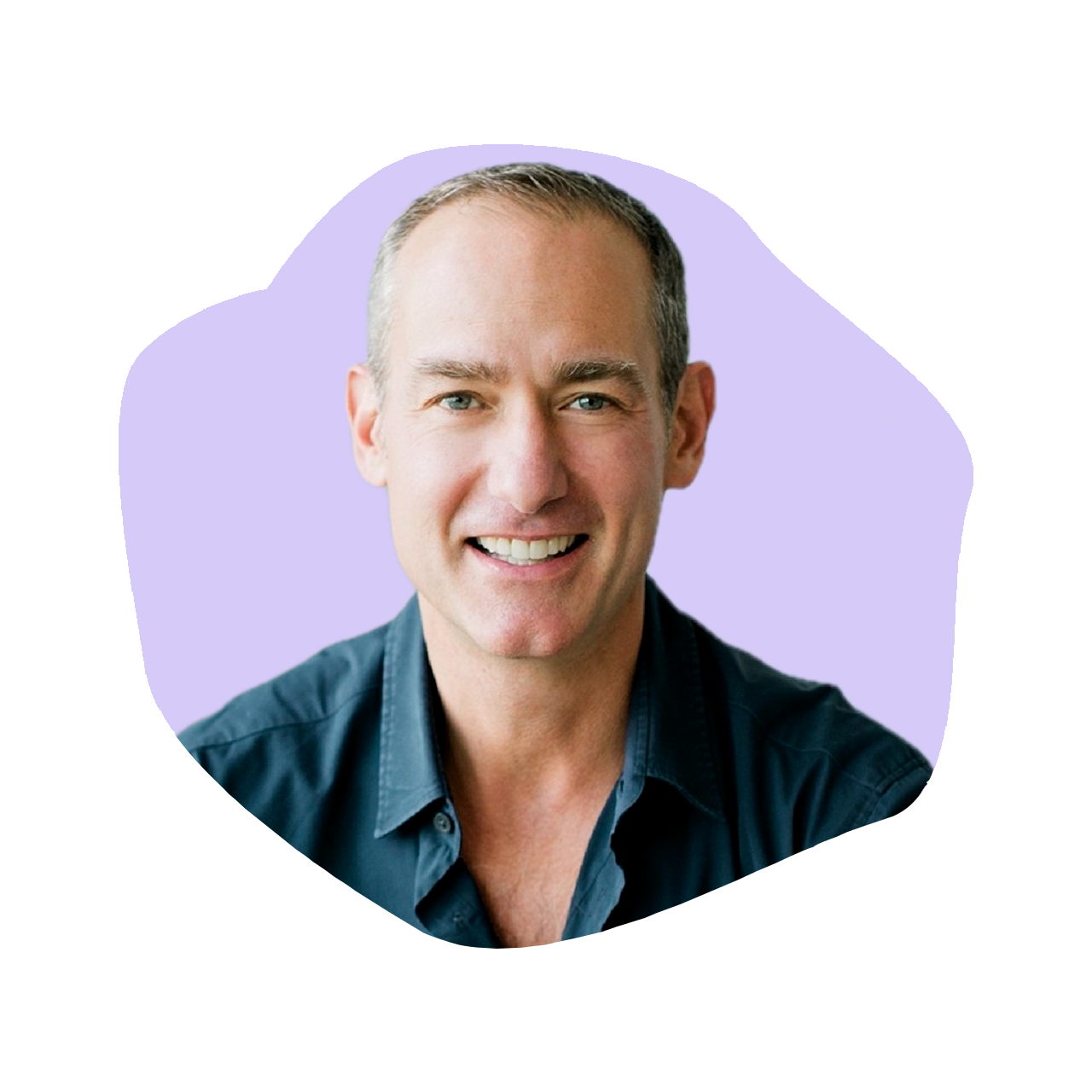
752
Mark Rampolla: Author of An Entrepreneur’s Guide to Freedom and Founder of ZICO
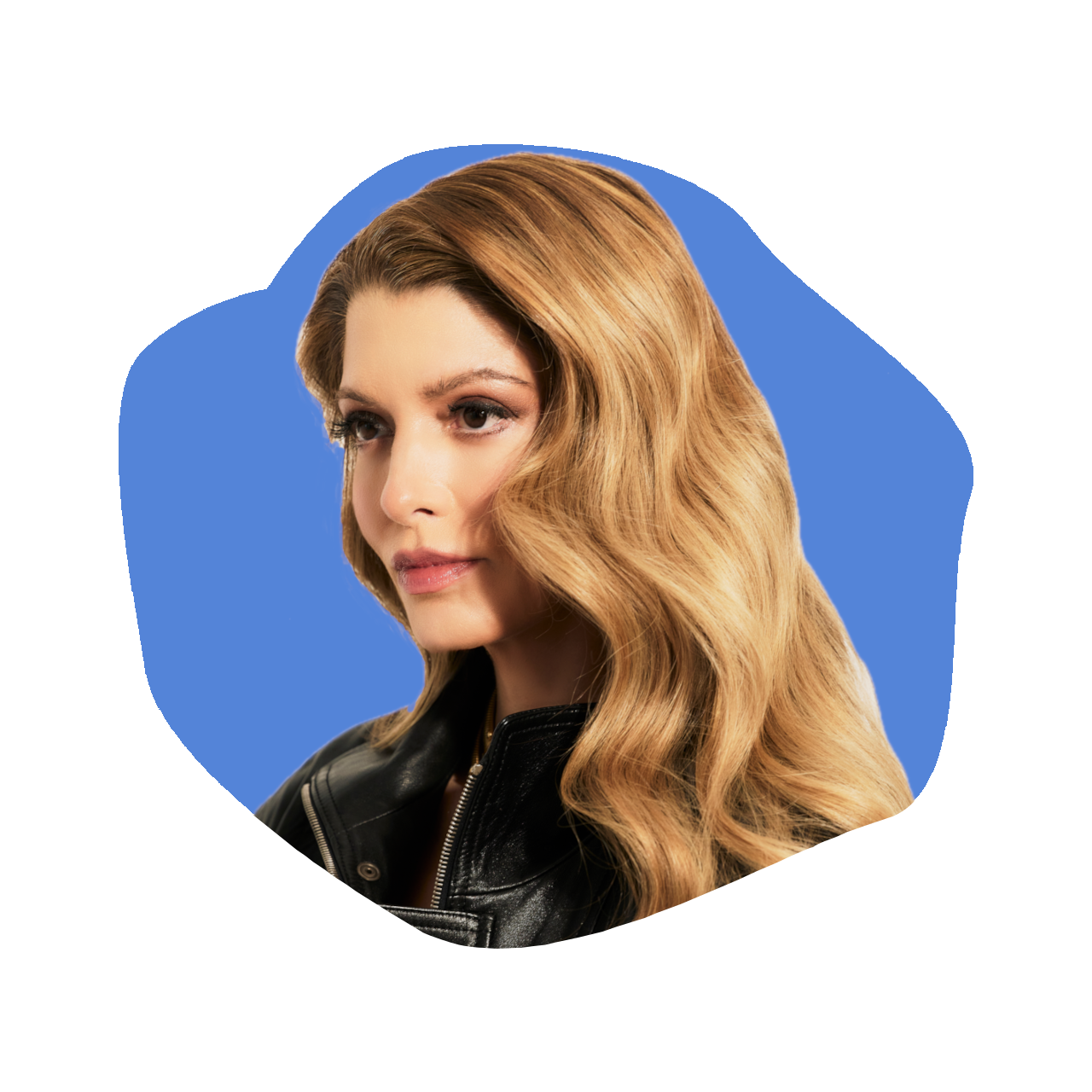
751
Deborah Pagani: Founder of Deborah Pagani Beauty
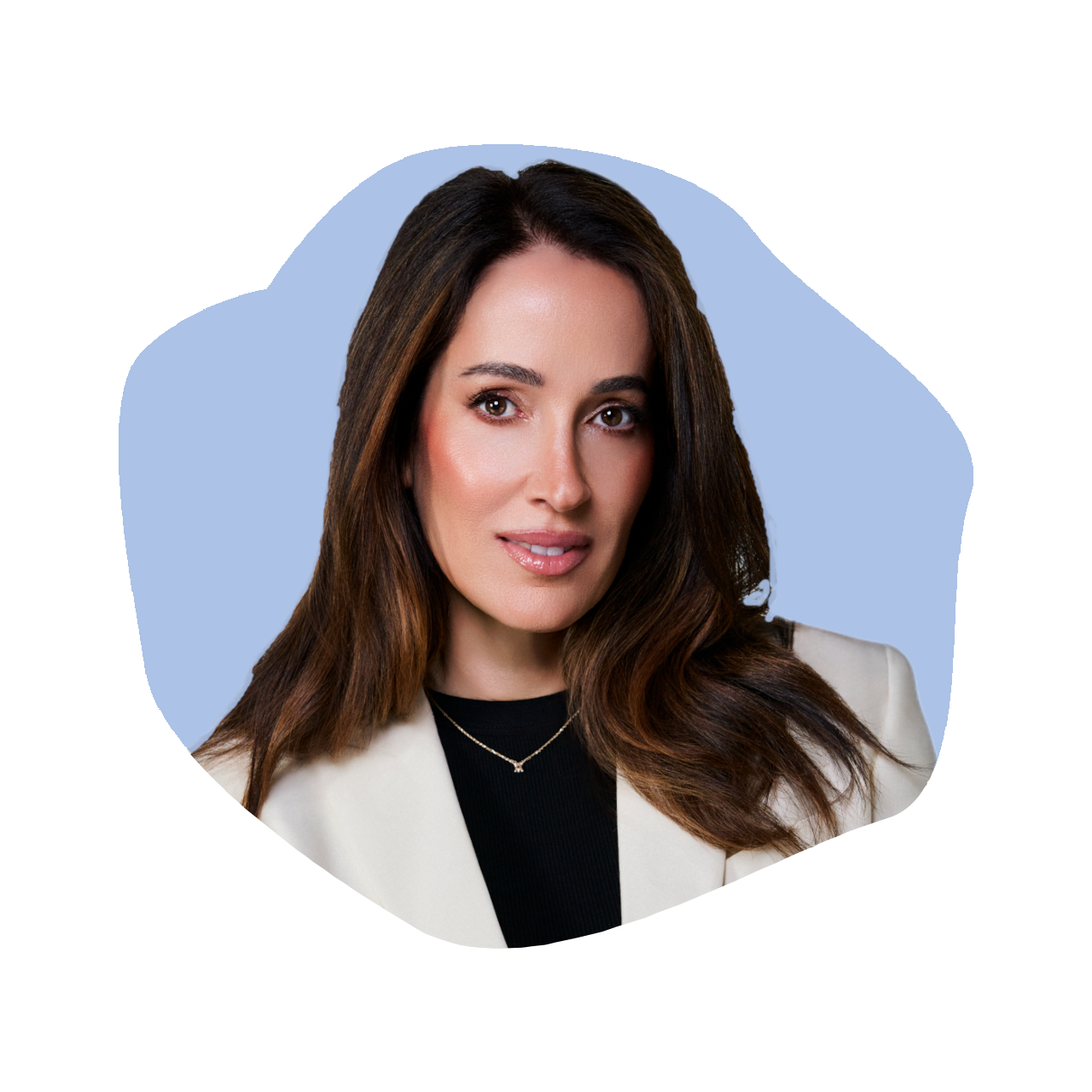
750
Angela Caglia: Founder & CEO of Angela Caglia Skincare
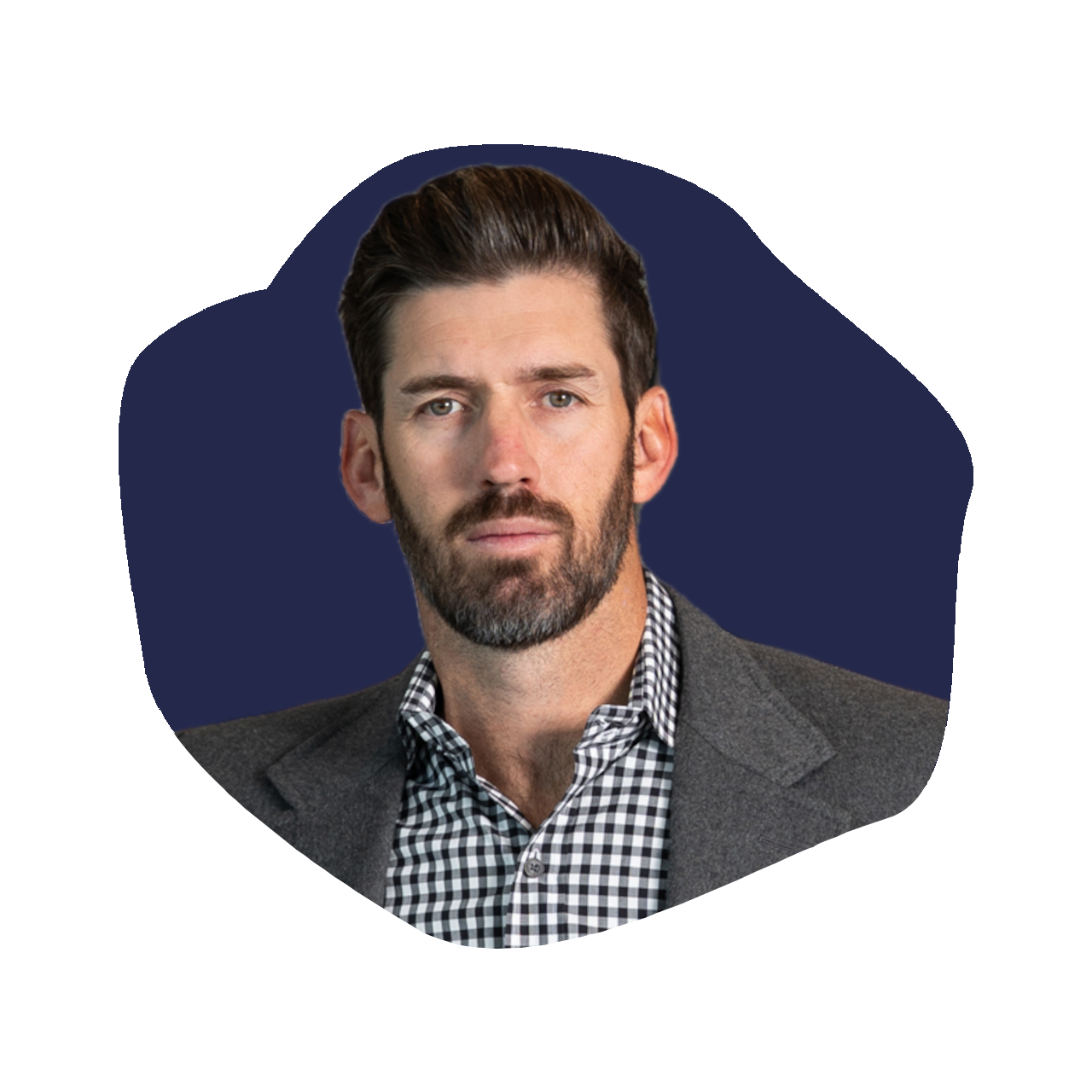
749
Doss Cunningham: Chairman & CEO of Nutrabolt

748
Cheree Ashley: Founder & CEO of Osier




